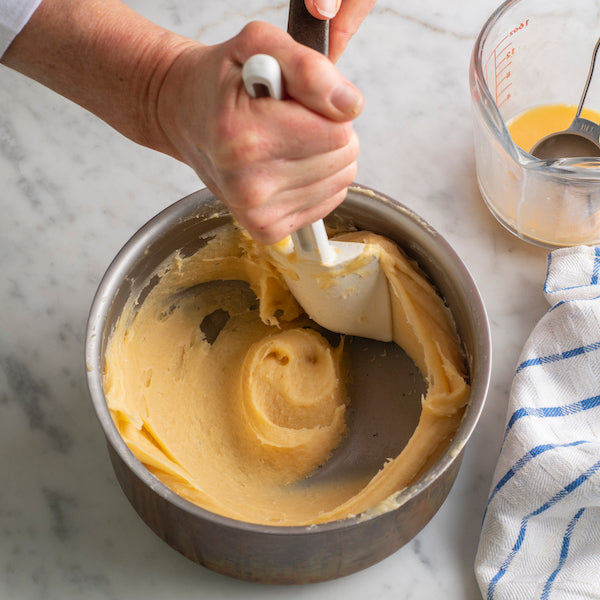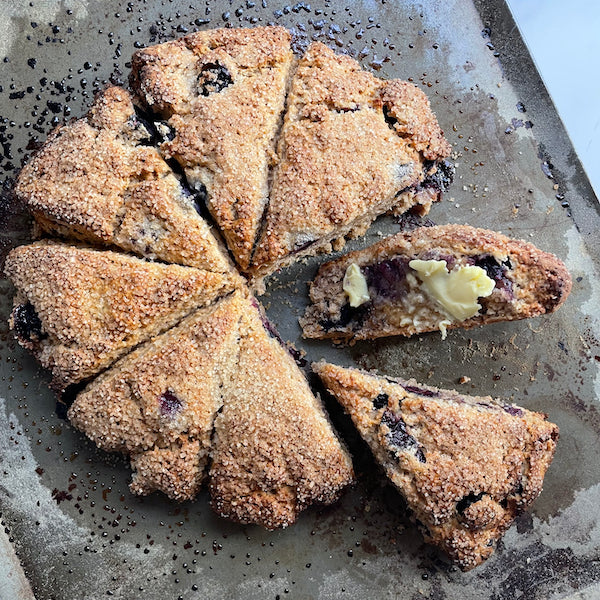BakeTips

Don't Over-rub
When making pastry it is important not to ‘rub’ too much. Let me explain….
To start with, the term ‘rubbing in’, which is used to explain the technique to bring the flour and butter together initially, is not entirely accurate – you don’t want to actually rubbing the butter into the flour, but rather break it into small pieces and coat it with the flour. Why this is important is that these flakes of butter through the pastry dough will melt during baking, releasing steam and pushing apart the structure around them, creating the characteristic flakiness you are looking for.
When ‘rubbing in’ the butter, you want to use your fingertips to pick some of the flour and butter up and then quickly and lightly slide your thumb across the tips of your fingers, breaking the butter pieces into smaller ones and coating them with flour as you do. This action will allow the butter to remain as distinct pieces, while coating them with flour.
As you rub in the butter, the mixture will first appear to be uneven, with large chunks of butter and patches of dry flour. As you continue to rub and break up the butter, the mixture will become finer, more even in texture and darker in colour. Rub JUST until the mixture resembles breadcrumbs with some larger pieces of butter still visible. Don’t continue to rub until the mixture starts to clump together as this is an indication that the butter has started to lose its identity as separate butter pieces and will begin to melt causing your final pastry to be tough and greasy when baked, instead of light and flakey as you would prefer.







